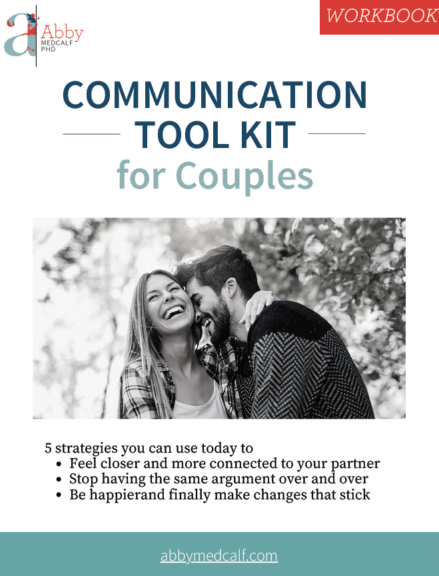
Gwyneth Paltrow and Chris Martin made conscious uncoupling famous in 2014. But where does it stand a decade later? When couples decide to part ways, the process can feel overwhelming and painful. But conscious uncoupling offers an alternative: a mindful way to separate that prioritizes respect, communication, and the well-being of everyone involved, including kids if you have them. Conscious uncoupling encourages a shift in focus, away from blame and resentment, toward healing, growth, and a peaceful, ongoing relationship as co-parents or an ability to move on in a healthy way if you don’t have kids. If you’re contemplating or already facing separation and wondering how to navigate it with kindness and respect, today is for you. We’ll dive into what conscious uncoupling is, what you have to do on your own, strategies for effective co-parenting, and my eight steps for separating peacefully.
15-minute read
There are two great downloads for today’s episode:
1) A Co-Parenting Meeting Checklist
2) A list of Collaborative Questions to help conversations go smoothly
And if you’re part of my paid membership, The One Love Collective on Patreon, here’s what you’ll be getting:
Tiers I, II, and III:
1) Journaling Prompts
3) A Conscious Uncoupling Worksheet
Tier III Also Gets:
4) The Conscious Uncoupling Checklist: Your Step-by-Step Guide to a Peaceful Breakup
Introduction
I want to say that today, I’ll be talking about conscious uncoupling with or without kids. I think everyone who’s splitting up should attempt to consciously uncouple so you can have peace in the separation and within yourself. I always say, wherever you end this relationship, you’ll begin the next, so it’s incredibly important that you end as peacefully as possible, so you don’t subconsciously get into the same type of relationship again or bring old fears or resentments into new relationships.
I also want to say that everything I’m saying here doesn’t apply if there’s been violence or abuse of any kind between the parents (or with the kids). And it’s also harder (although not impossible) to apply if there’s a significant mental health issue with one of the partners, such as active addiction, personality disorders, destabilized depression, bipolar disorder, or anxiety. If any of those circumstances are present, it’s best to read my Boundaries Made Easy book and go deep on practicing holding very firm boundaries above all else.
What is Conscious Uncoupling?
The term “conscious uncoupling” gained popularity through the work of psychotherapist Katherine Woodward Thomas, who aimed to create a framework for ending relationships in a way that avoids the destructive habits typically associated with divorce or breaking up. Conscious uncoupling means deciding to separate mindfully, with a focus on mutual respect, empathy, and self-reflection. While the concept might sound idealistic, research supports the benefits of this approach. Studies show that when couples part ways respectfully, they experience less long-term emotional distress, and children in these families display better psychological adjustment.
Three Reasons Why Consciously Uncoupling Matters (Even Without Kids)
- Preserving Emotional Well-being
Consciously uncoupling reduces resentment and conflict during the breakup process, which can lead to long-term emotional healing. By ending the relationship respectfully, both partners are less likely to carry unresolved feelings into future relationships, fostering healthier connections later. - Maintaining Mutual Respect
Even without children, you’ve likely shared significant time, memories, and experiences. Consciously uncoupling honors what you’ve built together by treating each other with kindness and respect throughout the separation. This can help ensure that the breakup doesn’t tarnish the positive aspects of your relationship. - Avoiding Social and Financial Fallout
Friends, family, or shared social networks can feel the effects of a messy breakup. Consciously uncoupling helps minimize collateral damage, allowing for smoother transitions within shared communities or financial arrangements like splitting assets, leases, or even pets.
The Solo Work You Need to Do/Focus On
- You need to create an inner calm first and foremost. You are responsible for your own emotional management. This means you can’t be a victim. Your emotions or boundaries can’t change because of something your soon-to-be ex is or isn’t doing. I did an entire episode on why you’re obsessed with your ex and what to do about it so take time to read/listen there so you can get real on what’s happening. But the next thing you need to do is read/listen to my episode on my step-by-step guide to managing your emotions. You are in charge and you need to do the work to get in control of how you’re thinking and feeling.
- You co-created this relationship; there’s no one to blame. It’s time to take full responsibility for your side of the street. What have you learned here? What are some wonderful takeaways to help you as you move forward? What did you learn about yourself? This is a perfect time to create a “Why Not” list. This isn’t a list of what you hated about this person or situation. It’s a list of why you weren’t a good fit. She liked X, and I liked Y. He didn’t value X, and it’s my top value.
- Create a mindset where everyone wins. So much of uncoupling comes down to transactions: you get the house, and I get the cars. You get this much time with the kids, and I get this much. You take the sofa, and I’ll keep the dishes. You get X amount of money, and I get Y amount. Instead, get out of the keeping score mindset (especially if you have kids, but even if you don’t). In the end, fairness isn’t what this is all about.
- Forgive and move on. You need to find self-compassion and forgiveness for yourself and compassion and forgiveness for your partner. If you can’t, you won’t be able to do this process.
Sign up for my Forgiveness Masterclass!
How to Start the Difficult Conversation About Conscious Uncoupling
Bringing up the idea of a peaceful split can be daunting. Here are some tips for initiating the conversation:
Step One: Be Ready
You’ve got to be in the right mental frame when you’re approaching the conversation. If you’re thinking things like, “It’s going to suck. It’s going to be really hard or difficult.” Then, that’s what you’re going to get. If you’re going in and you’re prepared to do battle, you’re going to end up hurt. You can’t have an open, connecting conversation if you’re approaching it like a war because you absolutely will both be on the defensive, and you can’t have mutual understanding from that place: it’s impossible.
Step Two: Identify a Time and Place
Set up a time and place that makes sense to have a connecting talk. Don’t have it at the very end of a long day because you’ll both be exhausted, and it’s hard to find the mental reserves. Try to be as fresh as possible.
Step Three: Set Intention
State your intention out loud first (both parties, if possible). What’s your intention for this conversation?
- It’s my intention to listen with an open heart to everything you say.
- It’s my intention to think about how much I love you and how much I want to understand your point.
- It’s my intention that we’ll both walk away from this conversation feeling connected and heard.
- It’s my intention to bring willingness and thoughtfulness to the table,
- It’s my intention that we’ll find a mutually beneficial solution and both walk away satisfied/content/happy.
Setting intention puts everyone in the right frame of mind and will program the RAS to look for good things. It’ll help people stay focused and mindful during the conversation. It will often even change the approach and tone of your partner as they realize that what they were about to say or how they were about to say it wasn’t in line with the intentions you discussed.
You’ve got to connect to correct and stating your intentions helps everyone involved feel safer and more connected. If you do nothing else, do this step: it’s a game-changer!
Step Four: Be Curious
Actively think of being curious during this conversation. You really want to understand where your partner is coming from and why they feel the way they do. So, listen like you’re wrong and be in a mode of seeking to understand (as opposed to being understood).
Your inside voice should sound something like: “Wow! I really wasn’t mean to my partner. I knew this would be hard, but I know I’ve been as loving as I can. So, I wonder why they’re having this reaction? What’s really going on here?”
Remind yourself why you’re listening:
- It’s because you love and care about your partner and want to find a loving resolution.
- It’s because you need to continue to co-parent, and it’ll improve everything if you can find a way to hear what they’re saying so you can co-create solutions.
Step Five: Stay Mindful During the Talk
Keep noticing your reactions. When you notice yourself getting defensive or angry, bring yourself back to present. You’re going to have to really stay in touch with your feelings throughout the conversation. Notice your shoulders tensing up? Take a deep breath and push yourself to relax.
Name your own feelings as often as possible in this dialogue (this can even be part of the conversation; you can stop and ask, “How are you feeling right now?” Or ask yourself, “What am I feeling right now?” If it’s a fear-based emotion such as resentment, hopelessness, or defensiveness – take a moment and bring yourself back to center. Have a mantra at the ready: “There’s nothing scary here. We’re going to work this out. There’s nothing for me to fear.”
As I mentioned, taking a deep breath is an excellent thing to do when you’re noticing any fear-based emotion emerging. You might notice impatience or frustration, so you’ll take a deep breath, which will stimulate your vagus nerve and help you stay calm and in the moment.
Be as mindful as possible as your partner speaks. Some marriage gurus talk about taking notes during the conversation, but that’s not my favorite way to start. Taking notes takes us out of the intimacy and connection of the moment. It also means that you’re missing so much of what your partner is saying, and you’re not able to read their body language because your brain is somewhere else. You’re not going to come back point by point and tell them how wrong they are so why take notes?
Instead, do your best to stay present and remember that you’re focused on a loving outcome. Keep coming back to that. “We will absolutely find a way through this and be there for one another.” “I’m going to be the dominant vibration with my partner, and we’re going to come to a mutually beneficial/loving arrangement about this.”
There is never a time in this conversation when you should:
- Interrupt
- Think about retaliatory remarks
- Keep score (well, what about you and what you did?)
- Deny the other person’s point of view (you misunderstood what I meant)!
- Refuse to participate (I’m tired of this topic. I’m not going to discuss this with you again!)
You’re not listening when you do any of these things and it’s a signal to reset yourself and be mindful.
Remember that it’s absolutely fine to stop the conversation or take a break if you’re noticing that you’re getting worked up or hurt and just can’t seem to stop feeling that way. Just be honest, “Your feelings are important but, right now, I’m noticing that I’m feeling defensive and taking things personally. Let’s take a break and come back in 30 minutes.” Make sure that when you come back that you re-state your intentions.
Step Six: Ask Clarifying Questions
At the beginning, or at some point during the conversation, ask that they give you a signal when they’re done so you can respond and ask questions. This will help you not interrupt and will ensure that your partner feels that you’re fully present in the conversation and giving them space and time to share. Don’t interrupt, unless it feels abusive. In that case, stop the conversation and reset.
It’s important to remember that your partner’s reactions (complaints, comments, or feedback) are about what they need, not what you need. Listen for what they need, which isn’t always what they’re asking for. Asking clarifying, collaborative questions after they’re done speaking is the way to go.
Grab my list of Collaborative Questions
You can clarify what the other person said with the ever-popular (and effective): “What I heard you say is X.” You can also get more information by asking, “Can you tell me more about X?” “Can you give me an example of X so I better understand what you mean?”
Remember not to SAC. Ask questions meant to gather more information, not ones disguised as suggestions.
Step Seven: Take Responsibility
No matter what is said to you, in whatever way, you still have responsibility in this relationship. I don’t care if your partner is reactive and not listening well; you co-create every single relationship you’re in. This means, you have to take responsibility for your side of the street.
If you’re still feeling hurt and upset by this person, that’s your responsibility. Your feelings are your responsibility. Your boundaries are your responsibility. Your reactions are your responsibility. This isn’t about blame, so don’t go there – I’ve got no patience for the pity party and victimhood. Put on those big boy/girl pants, and do the one next thing you can, and don’t give up.
Step Eight: Acknowledge Hurt Feelings (Without Dwelling on Them)
Acknowledge the pain and complexity of the situation without diving into past grievances. This shows respect for your partner’s feelings and sets the tone for empathy.
Research has found that empathetic communication can improve conflict resolution and increase cooperation during challenging conversations like this. By setting an example of empathy, you encourage your partner to follow suit.
Why Conscious Uncoupling is Especially Important for Co-Parents
When children are involved, the stakes are higher. Research confirms that parental conflict, particularly hostile exchanges, is a strong predictor of psychological and behavioral issues in children. A conscious uncoupling approach helps protect your kids by reducing conflict and ensuring they see their parents as allies rather than adversaries. Children benefit when they see that their parents can still work together harmoniously, even if they’re no longer a couple. In the majority of cases, you want to think of still being a family, even though you’re not a couple.
If you’re the healthier person/parent (and likely you are if you’re the one here with me), then you want to be the dominant vibration in the relationship and family.
Three Strategies for Peaceful Co-Parenting After Separation
Once you’ve decided to uncouple consciously, it’s crucial to develop a co-parenting strategy that maintains the peace. Here are several strategies to help you navigate this new dynamic as co-parents while keeping conflict low and communication open.
1. Create a Co-Parenting Plan Together
A co-parenting plan establishes the details of your shared parenting responsibilities and helps avoid misunderstandings. This plan should cover schedules, holidays, school events, medical decisions, and financial responsibilities.
My favorite tool here is to have a business meeting once a week with your ex, at least in the beginning as you negotiate the ins and outs of different households. Research suggests that structured communication, like regular check-ins, improves co-parenting relationships by setting clear expectations.
Because I love you so much, you can download my Co-Parenting Meeting Checklist so you know you’re on point.
5 Reasons Why Having a Couples Business Meeting Will Change Your Relationship
2. Take Care of Low-Hanging Fruit
There are always lots of feelings when you separate so it’s easy to fight about the little things like why the dog hasn’t been taken to the vet or the reason all the kids’ cleats have ended up at one parent’s house. My recommendation is to buy 2 or 3 of everything. Yup. You’ll still end up with all the socks at one parent’s house eventually but, instead of it being a day-to-day issue, you’ll have more time and space before these annoying things come up.
I also recommend telling your kids’ school there are two separate homes and that you need two of any textbooks so you can leave one in each house.
3. Formally Split Duties
It’s easiest if one parent is in charge of all the dental appointments and staying on top of them while another parent is the main person in charge of the baseball team your kid is on, including the schedule, volunteering, and rides. You’d catch one another up in the weekly business plan meeting.
On a last note, I’d say this: If communication remains strained, consider a parallel parenting approach, which means that you would formally split duties even further. This approach allows parents to maintain their roles without frequent conflicts. For one family I worked with, parallel parenting meant that each parent took responsibility for every single thing related to the kids. Mom handled the medical appointments and school projects, while Dad managed extracurriculars and family outings. By reducing direct interactions, they managed to avoid triggers and still support their kid’s needs.
Final Thoughts
Conscious uncoupling isn’t about erasing the past or pretending everything is fine. It’s about approaching separation with mindfulness, empathy, and respect, especially if children are involved. While it might not be easy, the rewards of this approach are worth it: lower stress, happier kids, and healthier future relationships. So, give these strategies a try. Remember, healing and growth take time, but by committing to a conscious, compassionate approach, you can navigate separation with dignity and respect.
For my Patreon Community: |
| Journaling Prompts (all tiers) |
| A Conscious Uncoupling Worksheet (all tiers) |
| Conscious Uncoupling Checklist: Your Step-by-Step Guide to a Peaceful Breakup (tier 3) |
Resources for Conscious Uncoupling: Eight Steps to Separate Peacefully
Join the One Love Collective on Patreon!
Boundaries Made Easy: Your Roadmap to Connection, Ease and Joy by Dr. Abby Medcalf
Abby’s List of Collaborative Questions
Moving on After a Divorce or Breakup
The Secret to Managing Your Emotions: A Step-by-Step Guide
How to Forgive Yourself: Five Tips to Let Go of Guilt, Shame and Past Regrets
Being Curious Will Improve All Your Relationships: Here’s How to Do It
Loving Kindness Guided Meditation
Empathy in Relationships Is the Key to Connection and Communication
The Secret to Positive Thinking in All Your Relationships
Calibration Exercise: Create a Positive Vibration to Start Your Day
5 Reasons Why Having a Couples Business Meeting Will Change Your Relationship






